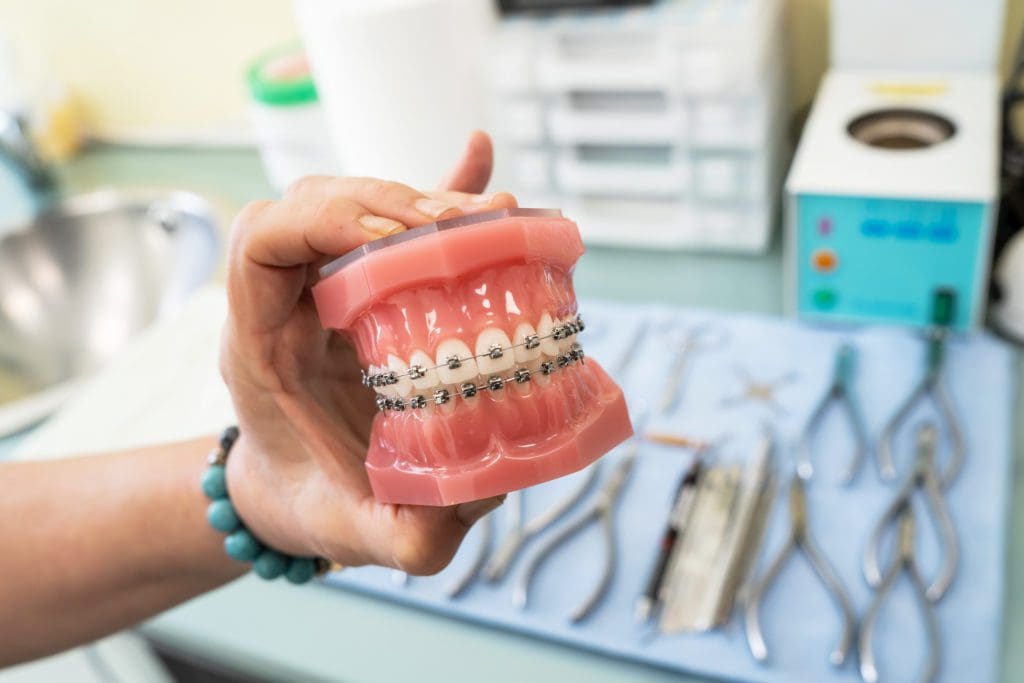How Cumming Orthodontics Addresses Common Braces and Invisalign Problems
How Cumming Orthodontics Addresses Common Braces and Invisalign Problems
Blog Article
Comprehensive Overview to Orthodontics Treatments for Fixing Oral Misalignments
In the world of orthodontics, the trip to achieving a perfectly lined up smile entails a myriad of procedures tailored to remedy oral imbalances. From traditional dental braces to unnoticeable aligners and even surgical choices, the area of orthodontics supplies a range of options to attend to varying degrees of dental irregularities. Understanding the complexities of each procedure, including their systems, benefits, and prospective disadvantages, is essential in making educated choices regarding one's orthodontic therapy. As we navigate through the extensive guide to orthodontic procedures for remedying oral imbalances, the detailed details of each technique will unfold, shedding light on the course toward a harmonious and useful dental positioning.
Orthodontic Procedures Review

Routine adjustments and tracking are crucial components of orthodontic therapy to make sure development is on track and to make any essential alterations along the method. By undergoing orthodontic treatments, people can not only attain a straighter smile yet also boost their general dental health and wellness and function.
Typical Dental Braces: How They Function
When taking into consideration orthodontic treatments for oral imbalances, conventional braces stand apart as a time-tested technique for correcting teeth positioning. Traditional braces contain braces, cords, and bands that work with each other to apply constant pressure on the teeth, slowly relocating them right into the desired alignment. The brackets are affixed to the teeth making use of a special adhesive, and the cords are threaded through the braces. By readjusting the stress of the cables, orthodontists can control the direction and pressure related to each tooth, leading them right into correct alignment with time.
As stress is applied to the teeth with the braces, the bone bordering the teeth is reshaped to sustain the new tooth placements. Patients will need regular modifications at the orthodontist's workplace to ensure the dental braces continue to apply the right stress for effective teeth motion.
Undetectable Aligners: Pros and Disadvantages
These clear, tailor-made trays are basically undetectable when worn, making them an enticing choice for individuals looking for a more aesthetically pleasing orthodontic treatment. Individuals can eliminate the aligners prior to consuming or brushing their teeth, lowering the danger of food getting stuck in the appliance and simplifying the cleansing process.

Surgical Orthodontic Options
Surgical treatments in orthodontics present sensible choices for attending to complex dental imbalances that might not be properly settled with traditional orthodontic therapies. While invisible aligners and traditional dental braces can deal with several orthodontic problems, particular cases require medical intervention to accomplish optimum outcomes. Surgical orthodontic options are usually advised for serious malocclusions, significant jaw disparities, and situations where the underlying bone structure needs alteration to accomplish visit here appropriate alignment.
One common surgical orthodontic procedure is orthognathic surgery, which includes rearranging the jaws to fix useful concerns such as trouble eating or speaking. This surgical treatment is frequently executed in cooperation with an orthodontist who assists straighten the teeth prior to and after the treatment. Surgical orthodontics may likewise entail treatments to subject influenced teeth, remove excess gum cells, or reshape the jawbone to produce an extra harmonious face profile.
Before considering surgical orthodontic alternatives, patients undergo a detailed assessment to identify the need and potential advantages of such interventions. orthodontist. While surgical procedure might seem complicated, it can dramatically improve both the feature and visual appeals of the smile in instances where traditional orthodontic treatments fail
Retainers and Post-Treatment Care

Post-treatment care entails complying with the orthodontist's directions carefully. This might consist of correct dental hygiene practices, participating in follow-up appointments, and using the retainers as recommended. Failure to abide by post-treatment care guidelines can result in relapse, where the teeth slowly return towards their initial positions. Consistent retainer wear, good oral health, and normal dental exams are essential for maintaining the outcomes achieved with more tips here orthodontic surgery and making certain the long-term stability of the corrected dental alignment.
Conclusion
In verdict, orthodontic treatments use various choices for dealing with dental imbalances. Surgical orthodontic options are available for a lot more severe imbalances. Overall, orthodontic procedures can successfully improve oral health and wellness and aesthetic appearance.
As we navigate via the extensive guide to orthodontic procedures for fixing oral misalignments, the detailed information of each approach will unfold, shedding light on the course toward a unified and practical oral alignment. - aligners
One of the most common orthodontic treatments is the use of braces, which consist of metal brackets and cables that use gentle stress to gradually change teeth into the preferred position.When considering orthodontic treatments for oral imbalances, traditional dental braces stand out as a reliable technique for correcting teeth positioning. Additionally, unseen aligners might not be ideal for complicated orthodontic issues that require more significant teeth motion, as they are commonly suggested for moderate to moderate instances. Retainers are custom-made orthodontic devices developed to hold teeth in their remedied placements after the completion of orthodontic therapy.
Report this page